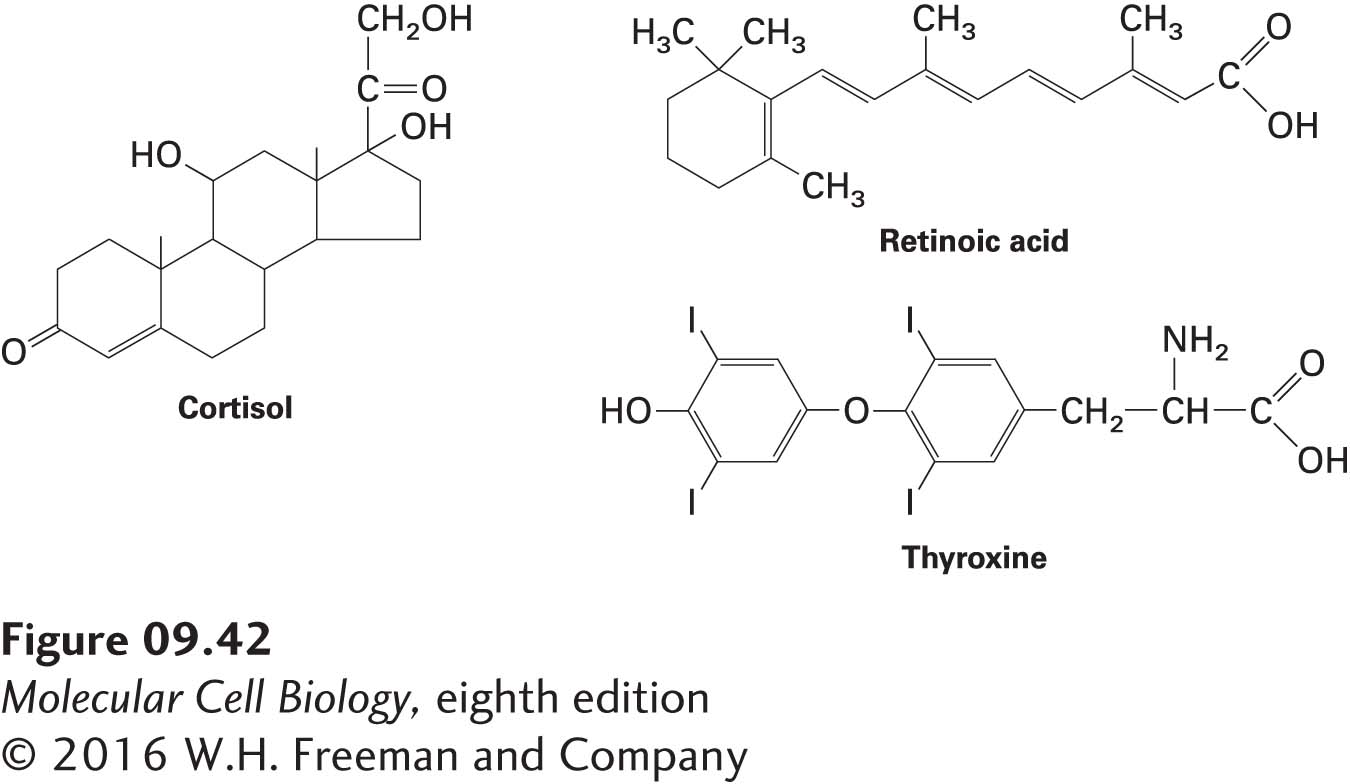Nuclear Receptors Are Regulated by Extracellular Signals
In addition to controlling the expression of transcription factors, cells also regulate the activities of many of the transcription factors expressed in a particular cell type. For example, many transcription factors are regulated by intercellular signals. Interactions between the extracellular domains of transmembrane receptor proteins on the surface of the cell and specific protein ligands for these receptors secreted by other cells or expressed on the surfaces of neighboring cells activate the intracellular domains of these transmembrane proteins, transducing the signal received on the outside of the cell to a signal on the inside of the cell. The intracellular signal then regulates the activities of enzymes that modify transcription factors by phosphorylation, acetylation, and other types of post-translational protein modifications. These post-translational modifications activate or inhibit transcription factors in the nucleus. In Chapter 16, we describe the major types of cell-surface receptors for protein ligands and the intracellular signaling pathways that regulate transcription-factor activity.
Here we discuss another major group of extracellular signals that regulate the activities of transcription factors: small, lipid-soluble hormones including many different steroid hormones, retinoids, and thyroid hormones. These lipid-soluble hormones can diffuse through the plasma and nuclear membranes and interact directly with the transcription factors they control (Figure 9-42). As noted earlier, transcription factors regulated by lipid-soluble hormones include the nuclear-receptor superfamily. These transcription factors function as transcription activators only when bound to their ligands.

FIGURE 9-42 Examples of hormones that bind to nuclear receptors. These and related lipid-soluble hormones diffuse through the plasma and nuclear membranes and bind to receptors located in the cytosol or nucleus. The ligand-receptor complex functions as a transcription activator.
